2023 Tesla Model Y Review and Test Drive
A fun EV that goes big on minimalism.
 Sebastian Blanco
Sebastian Blanco
The Model Y is Tesla's entry-level SUV, but that doesn't mean everyone will want to enter the world of electric vehicles (EVs) this way. Some may opt for the lower-cost Tesla Model 3 sedan, while others may find an EV from a more traditional automaker more appealing. But if you're looking for a decent number of high-tech features, the 2023 Tesla Model Y is a tasty option. Perhaps it's an acquired taste, but a delicious one nonetheless.
Tesla introduced the Model Y in 2020. By the first quarter of 2023, it was the bestselling vehicle in the world.
Tesla doesn't change its vehicles every model year. Instead, the company regularly updates the features available on its EVs. For 2023, the Tesla Model Y comes in three trim levels: base, Long Range, and Performance. Prices range from the high $40,000s to the mid-$50,000s, including the destination charge to ship the SUV from one of Tesla's U.S. factories in California or Texas to your local Tesla store.
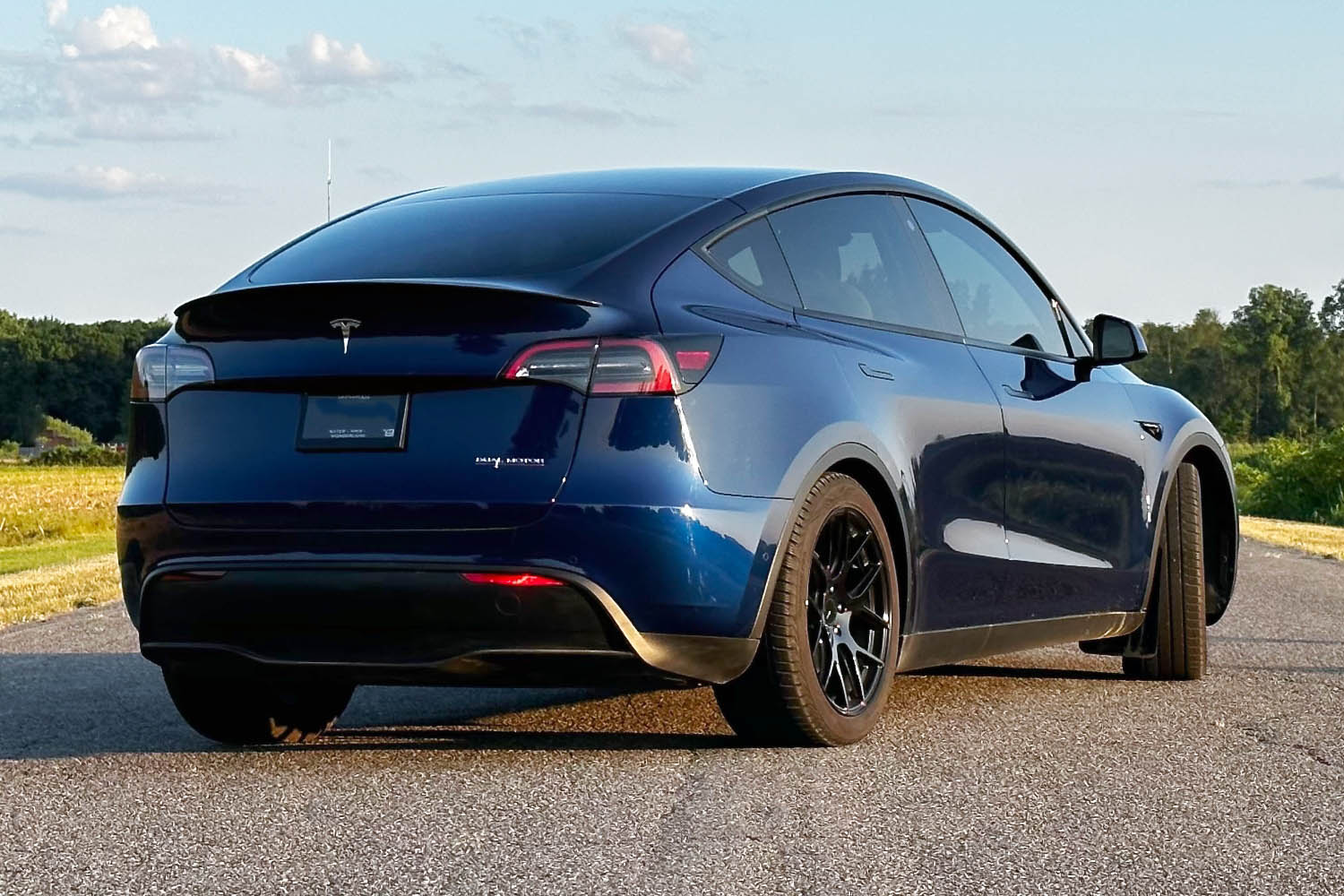 Sebastian Blanco
Sebastian Blanco
For this 2023 Model Y review, I test-drove the Performance Dual Motor AWD model in Michigan in early summer. It came with extra-cost Deep Blue Metallic exterior paint and the optional black and white interior. At the time of the evaluation, the manufacturer's suggested retail price for this configuration was $58,130, including the $1,390 destination charge and a $250 order fee. As of publication, the Model Y is eligible for a federal income-tax credit of up to $7,500. Additional incentives and rebates could be available in your area.
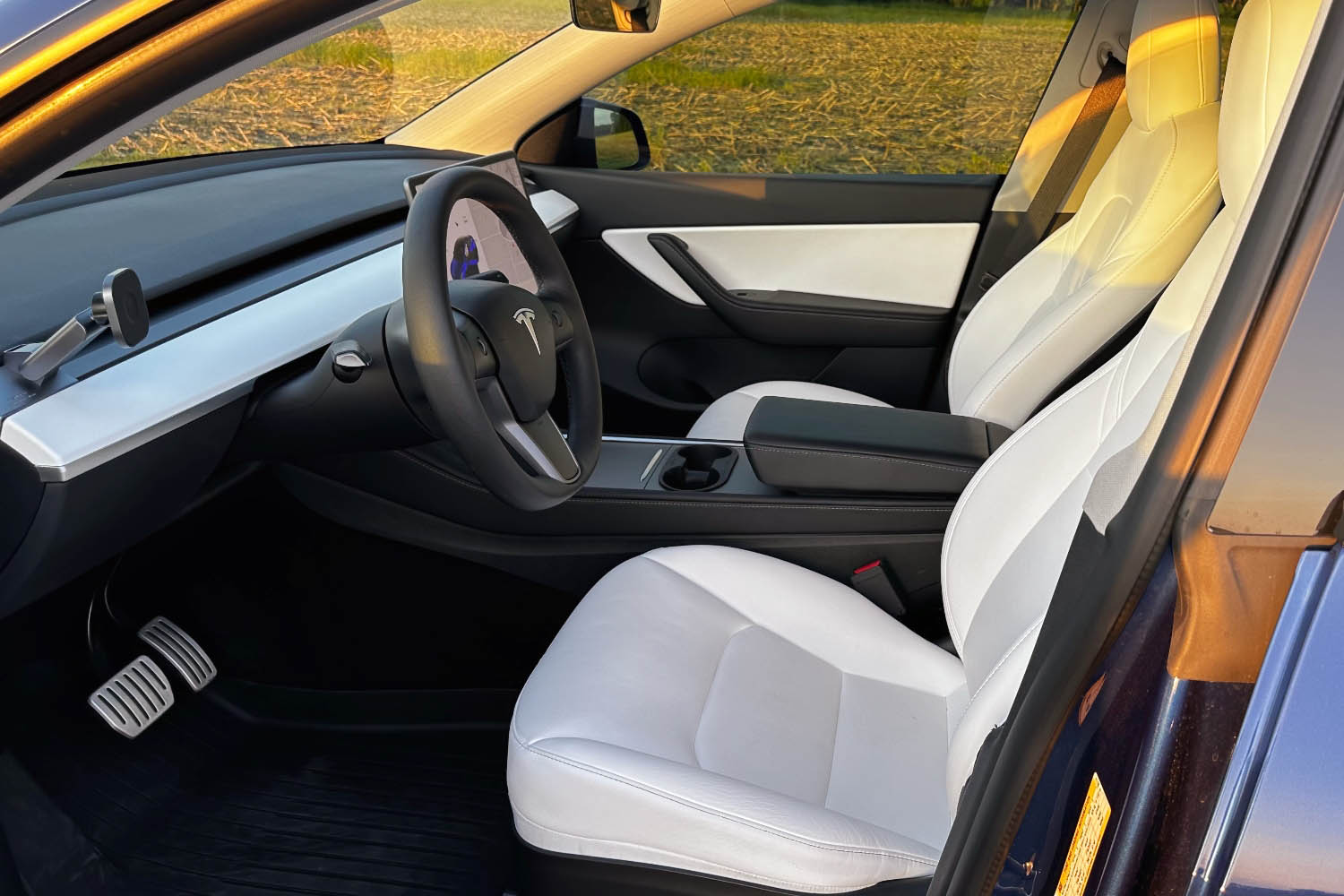 Sebastian Blanco
Sebastian Blanco
2023 Tesla Model Y Review: The Design
Tesla didn't make major visual changes to the Model Y's exterior for 2023, but the interior looks as though the automaker had taken minimalism a tad too far. Upon first glance, the clean lines and lack of buttons give the impression of an elegant interior. However, the sparse dashboard is the first hint that you don't operate a Tesla the way you would other vehicles.
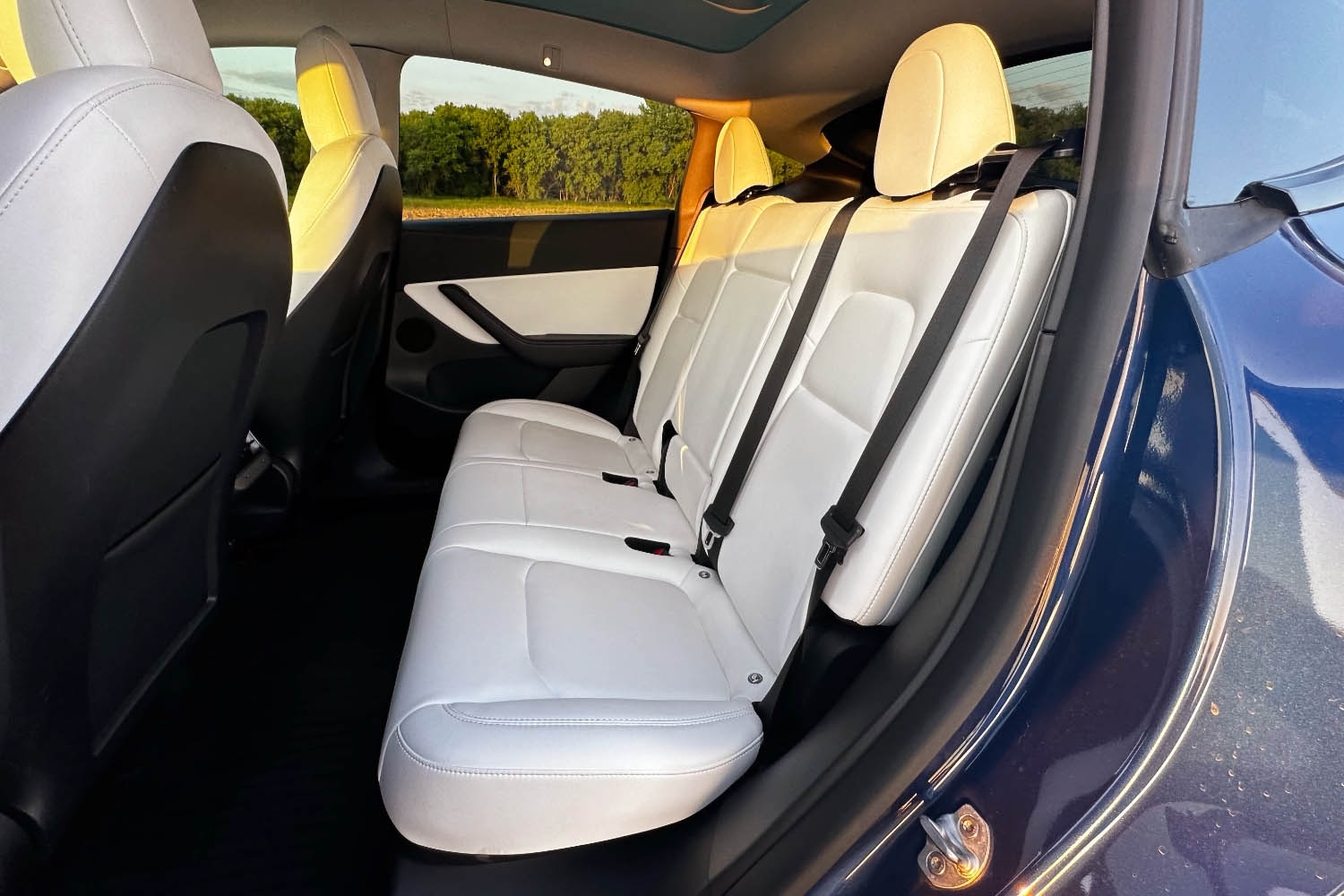 Sebastian Blanco
Sebastian Blanco
For instance, there's no on-off button, so Tesla created an animation for the 15.0-inch center touchscreen that shows where to wave the key card while stepping on the brake to turn it on. (The radio frequency identification, or RFID, transmitter is under the center armrest.) Hold the key near the bottom of the pillar between the front and rear doors to lock and turn off the SUV when you leave the vehicle.
The synthetic leather on the seats and suede and soft plastics on the dashboard work together to enhance this elegant impression. But it's almost too sparse and clean. There's no simple button to operate the glovebox, for example. Instead, Tesla requires that you tap through a series of menu buttons on the touchscreen to open it.
At least the car's temperature and volume controls are always available at the bottom of the touchscreen. Once you get used to these quirks, you can drive the car without wondering every minute how to control this or that feature. Still, I would have greatly appreciated a row of physical buttons under the screen, especially if they were user-programmable.
The Model Y's interior isn't totally impractical. There are two cupholders in the center console and water bottle holders in the doors. Two covered storage compartments under the center armrest make it easy to keep small items from cluttering the look. Other practical touches include wireless smartphone charging for two devices under the dashboard and four USB-C charging ports, two in front and two for the rear passengers.
I found all five seating positions to be comfortable, and the back seats to have plenty of legroom. Ordering your Model Y with two small seats in the cargo hold is also possible, allowing the electric SUV to carry seven people.
Overhead, the giant glass moonroof gives the interior an open feel, but the lack of a physical shade is frustrating. Tesla says the glass can protect you from infrared and ultraviolet light. Still, I opted to wear a hat while driving whenever the sun was out.
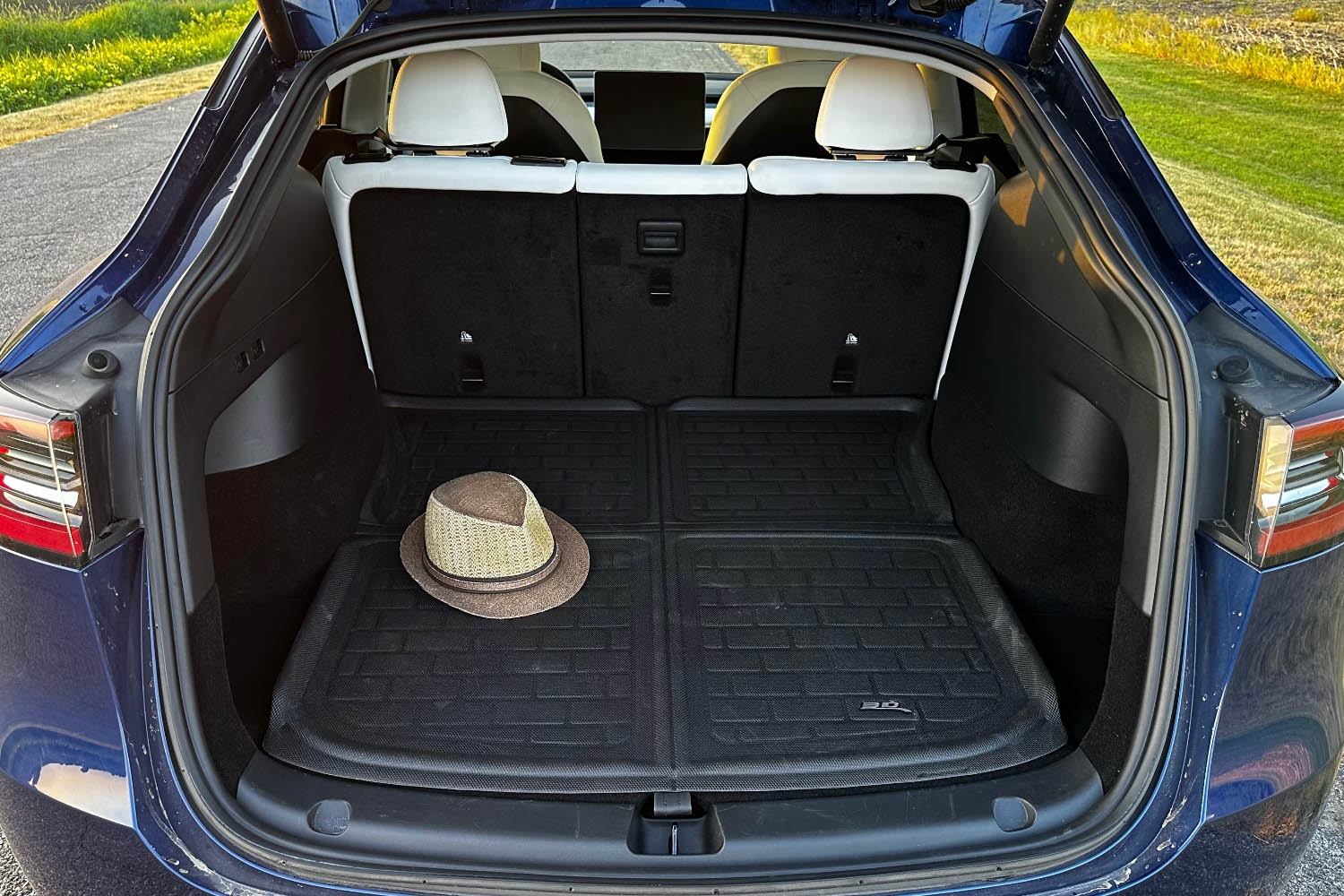 Sebastian Blanco
Sebastian Blanco
Tesla Model Y cargo-space measurements depend on whether you've ordered the third-row seat. With the option, the Model Y offers 12.8 cubic feet of space with seven people aboard, 26.6 cu-ft with five people along for the ride, and 67.9 cu-ft behind the front seats. Add the 4.1 cu-ft front trunk, or frunk, and you have 72 cu-ft of total cargo volume.
The five-passenger Tesla Model Y's cargo-space measurements are 30.2 cu-ft behind the back seat and 72.1 cu-ft behind the front seats, plus the frunk, for a maximum total of 76.2 cu-ft.
 Sebastian Blanco
Sebastian Blanco
2023 Tesla Model Y Review: The Technology
The Model Y's interior and Tesla's reputation promise a high-tech experience from the driver's seat, and this EV does not disappoint. Tesla's software provides lighthearted and unnecessary features, such as a digital fart-sound generator and the ability to play video games. But it also supplies practical features such as an energy-consumption chart and a gentle chime to alert you when the traffic light turns green.
When the Model Y is parked, such as at a Tesla Supercharger station, the ability to watch videos from YouTube or paid subscription services such as Netflix or Hulu is neat, and the standard premium sound system in the Model Y means high-quality streams should sound crisp and full.
The Model Y has its limits, though. There's no Apple CarPlay or Android Auto connection, but I found that pairing a phone via Bluetooth was painless. There are other quirks. You close some windows on the screen by swiping down and others by tapping an X in the corner of the screen.
Tesla's voice-recognition software understood my requests well, but implementation was hit or miss. For example, if I had a menu tile open on the screen, such as the radio page or the car settings page, and I asked the car to navigate to a destination, the results stayed hidden behind the already open tile, making it seem like the technology wasn't responding.
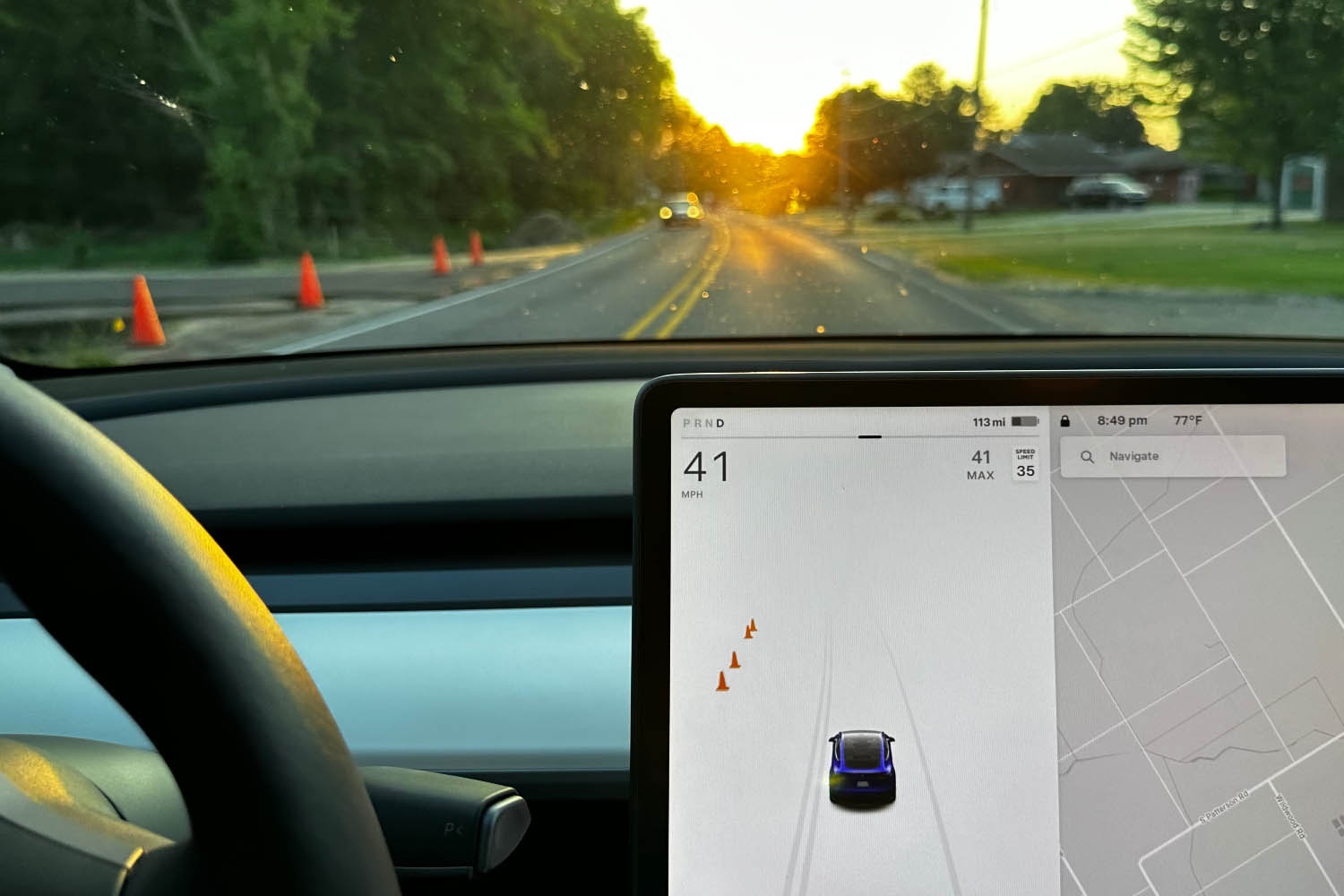 Sebastian Blanco
Sebastian Blanco
My test vehicle did not have the optional Full Self-Driving Capability or Enhanced Autopilot advanced driving-assistance systems (ADAS), so I did not test these more advanced features. All Model Ys come with standard Autopilot, which I've found to be a good starter package for drivers getting to know ADAS. To be absolutely clear: No Tesla vehicles are fully autonomous, self-driving vehicles today.
Tesla is trying, however, to build confidence in the self-driving tech of tomorrow. For example, a Full Self-Driving visualization preview function allows Tesla drivers to observe the parts of the world their car sees as they move down the road. You can set the screen to show the various objects that the Model Y's tech identifies, such as digital representations of surrounding vehicles and even traffic cones on the side of a road.
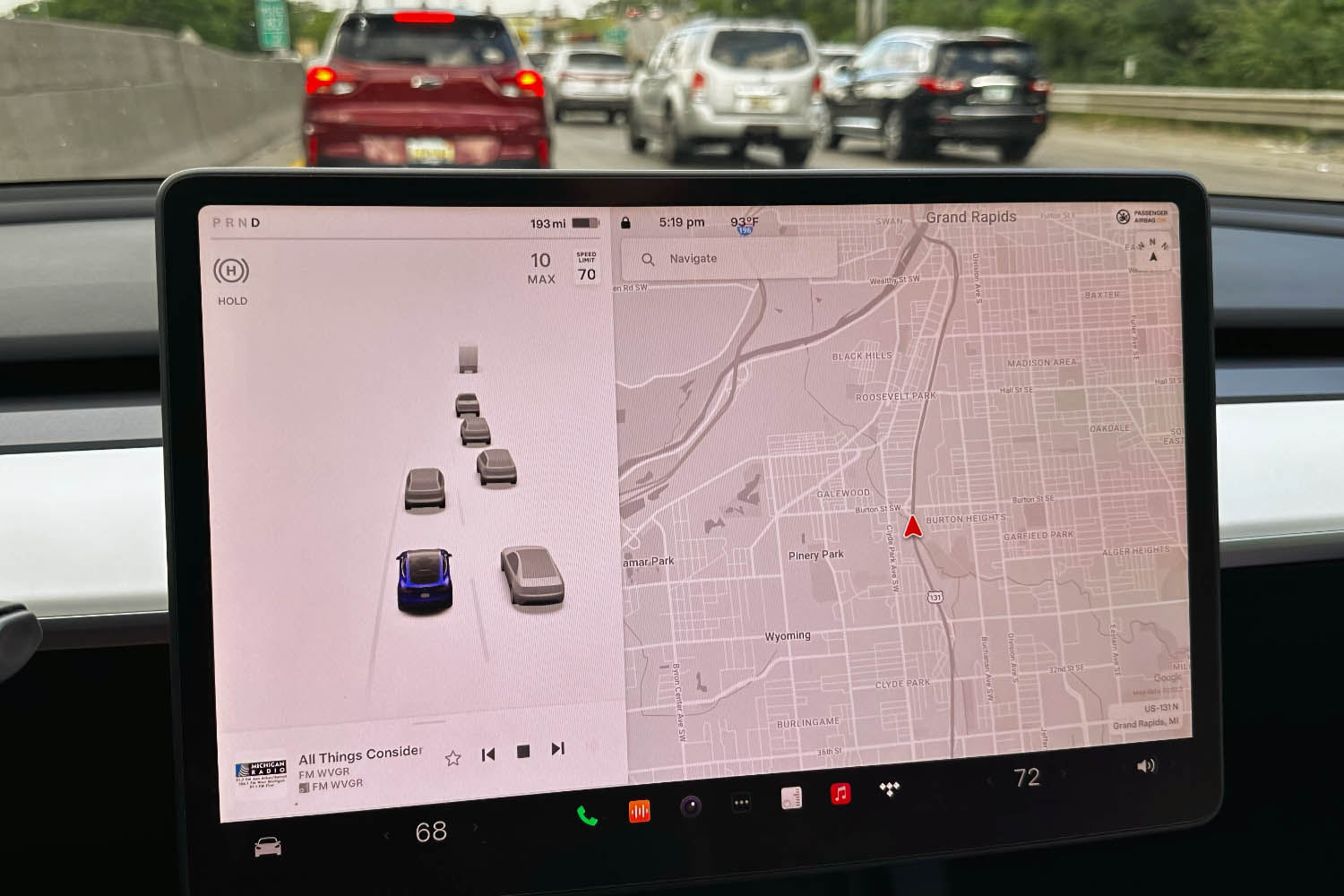 Sebastian Blanco
Sebastian Blanco
On the other hand, the EV's real-time information makes it clear that it's not ready for a driver to trust the car to handle everything. Tesla's current software isn't entirely accurate. While the system did successfully identify construction cones and trash cans during my test drive, it did not display every car stopped on the side of the road and missed plenty of other vehicles and nearby objects.
I also disagreed with the system about what counts as nearly leaving a lane, which meant I heard plenty of false alerts when I had Lane Assist engaged. The beeping is annoying, but you can turn it off.
The National Highway Traffic Safety Administration has not yet rated the 2023 Model Y for safety. However, the Insurance Institute for Highway Safety gives the 2023 Model Y a Top Safety Pick+ rating for the 2023 calendar year.
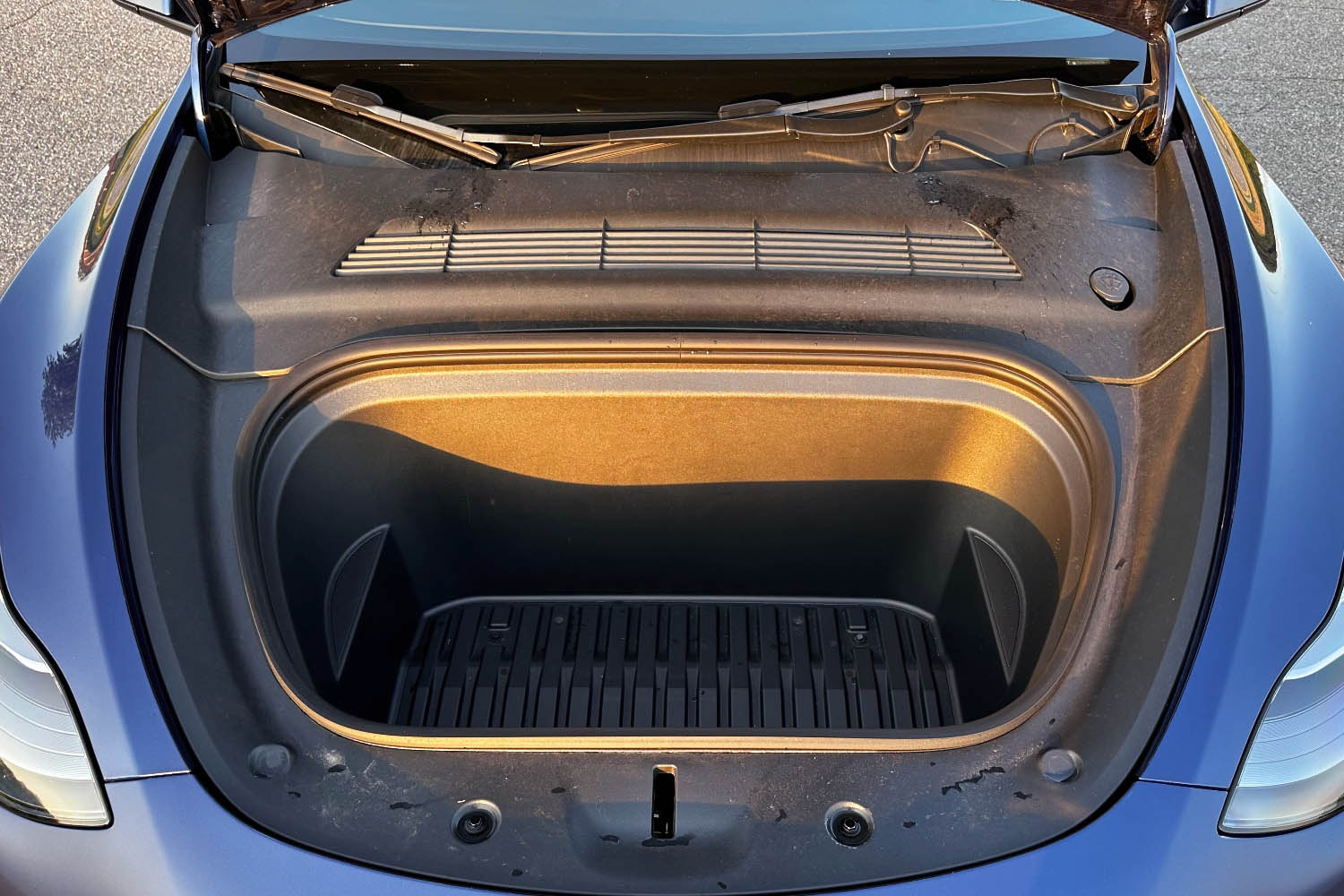 Sebastian Blanco
Sebastian Blanco
2023 Tesla Model Y Review: The Drive
Linear acceleration was, without a doubt, the highlight of my Tesla Model Y Performance Dual Motor AWD drive. The two motors in the Model Y provide an official zero-to-60-mph acceleration time of just 3.5 seconds.
The problem is that the EV doesn't stand out on squiggly roads the way it does when going straight ahead. The Model Y handles fine in the curves, never feeling sloppy or uncertain, but it's not particularly engaging to drive.
Comfort, Standard, and Sport steering modes should allow most drivers to find the right feel. The Standard mode offered the best balance between comfort and capability, but Sport was also mildly delightful on the right roads. I didn't get to test the SUV's closed-circuit-only Track Mode.
Straight roads are also the safest time to see how fast you're going. There's no vehicle information of any kind visible directly behind the steering wheel because everything is on the central screen. It's not the worst thing in the world, but it is another example of Tesla deciding that looks are more important than practicality.
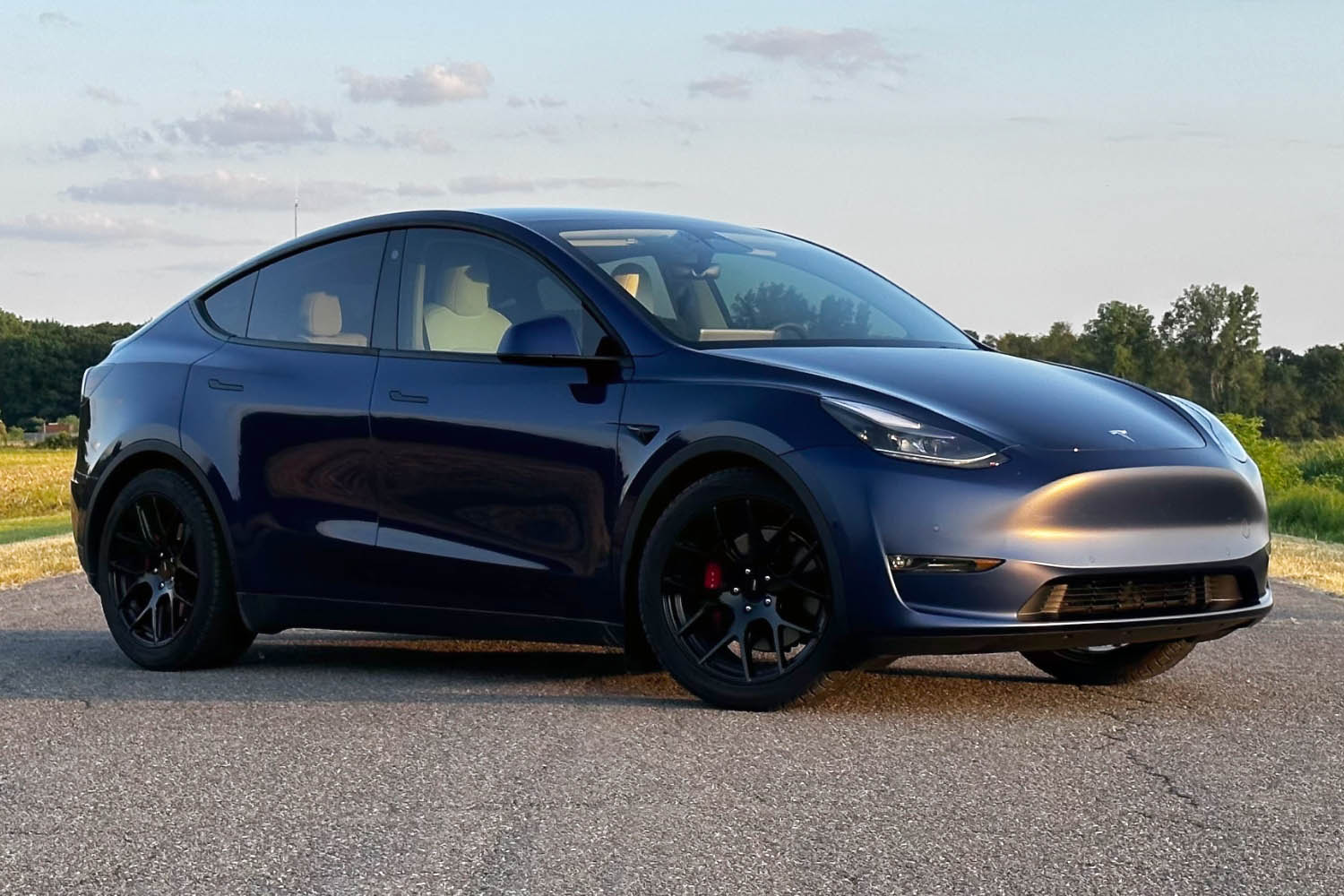 Sebastian Blanco
Sebastian Blanco
As you attempt to hustle through dramatic curves, more of the Model Y's driving flaws emerge. The EV's adaptive air suspension is disappointing, feeling too firm on anything but the smoothest roads. Yet the Y's tight suspension doesn't translate into a vibrant handling feel. At least the EV remains quiet in almost all situations.
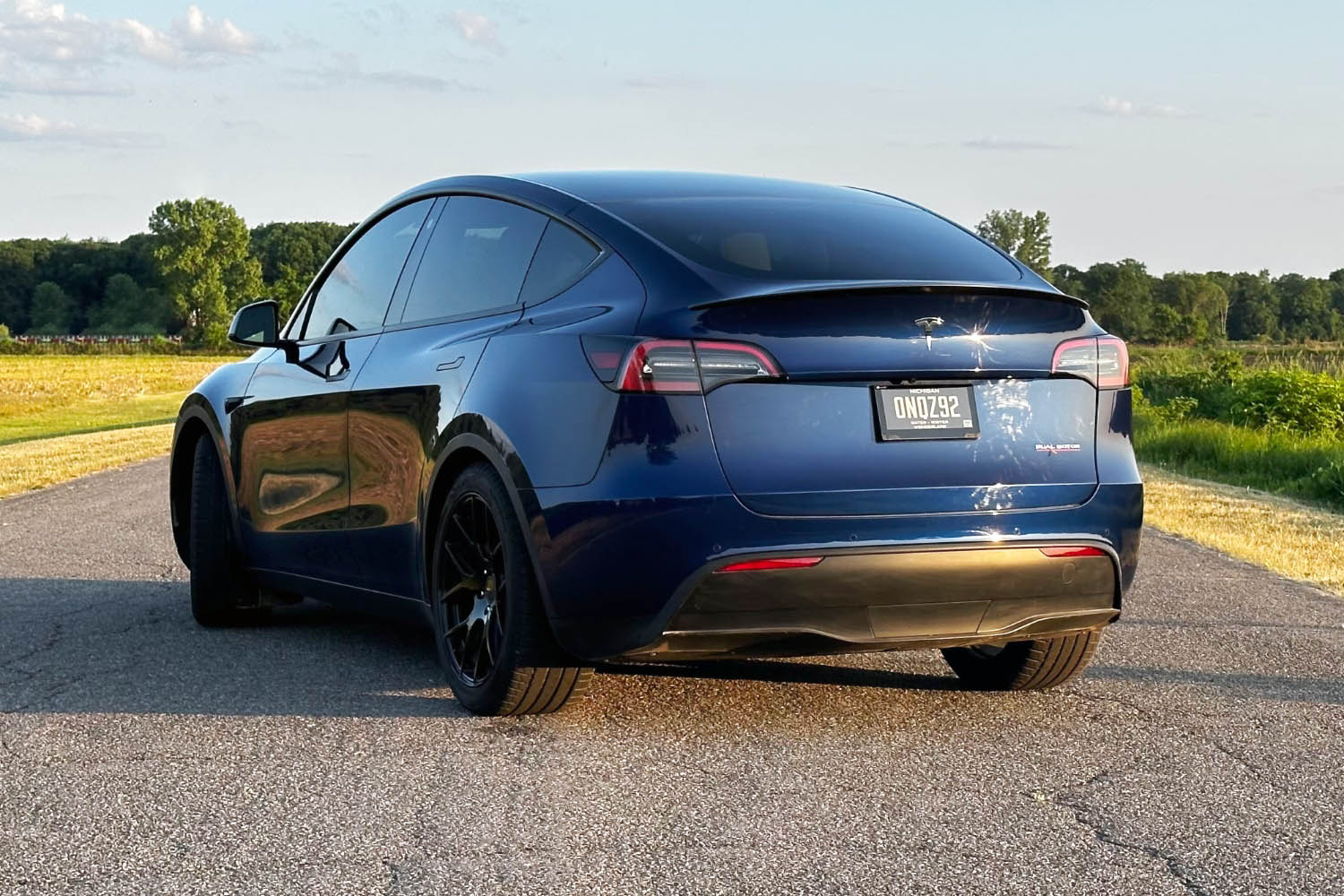 Sebastian Blanco
Sebastian Blanco
The EPA says the 2023 Model Y has an official range of 303 miles, translating to 30 kWh of energy usage to travel 100 miles (30 kWh/100 mi). During my time with the Model Y, I averaged 32.2 kWh/100 mi, which means I would get less than 300 miles on a full charge. (A higher kWh number means the EV consumes more energy to go the same distance).
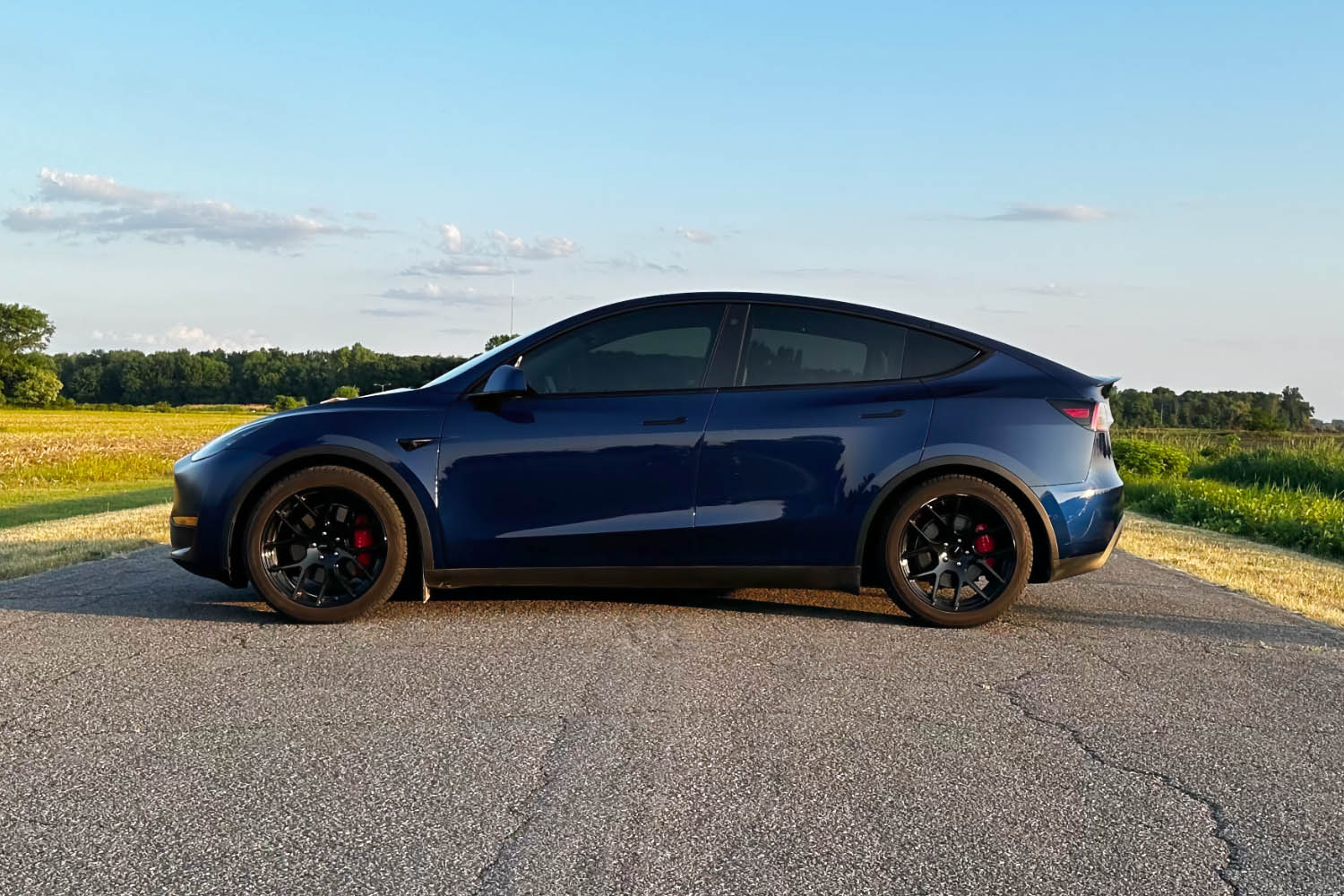 Sebastian Blanco
Sebastian Blanco
Is the 2023 Tesla Model Y a Good Car?
The 2023 Tesla Model Y is a good car, but it's not going to be a good car for everyone.. The market is full of all-electric SUVs, including the Ford Mustang Mach-E, Hyundai Ioniq 5, Kia EV6, and Volkswagen ID.4.
The Model Y is a tech-forward EV with solid safety features and a few irreverent bits, though these are often buried behind yet another menu on the all-important infotainment screen.
After living with the Tesla Model Y for just a few days, though, it's obvious to me why this EV is so popular — the most popular, in fact. Who am I to disagree with millions of happy customers?
Written by humans.
Edited by humans.
 Sebastian Blanco
Sebastian BlancoSebastian Blanco has been writing about electric vehicles, hybrids, and hydrogen cars since 2006. His first green-car media event was the launch of the first Tesla Roadster in 2006, an event where he almost elbowed Arnold Schwarzenegger in the groin. Since then, he has been tracking the shift away from gasoline-powered vehicles and discovering the new technology's importance not just for the auto industry, but for the world as a whole.
Related articles
View more related articles